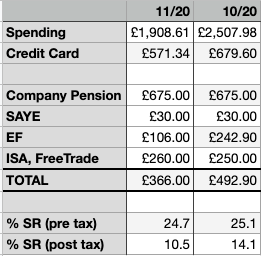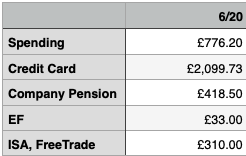These are my notes from reading the “I Will Teach You To Be Rich” article and applying a UK translation to the rungs of the ladder. The original article by Ramit Sethi can be found here at https://iwillteachyoutoberich.com/blog/investing-for-beginners.
Three aspects of investing are mentioned:
- Retirement
- Investing will help lowering the age at which you could potentially retire.
- Generate income
- It’s important to have more than one stream of income, e.g., not just relying on your salary.
- It’s easy to do
- Using automated systems takes the manual effort of things.
Ramit describes steps you could take toward investing as rungs on a ladder, I have used the same titles for each rung but then explain what it would look like for a resident of the United Kingdom.
Please note, I am not a financial advisor, and this post is for information only. I do not make any specific recommendations; you should do your own research.
Retirement ages, investment limits etc. are correct at the time of writing although these are subject to change.
The Ladder of Personal Finance
Rung 1: Contribute to your 401k
In the UK this is the equivalent of your work-based pension. The key to this first step is to contribute enough to meet your company’s match, e.g., if they offer a 3% match then you should be contributing at least 3% of your monthly salary.
The contributions are made pre-tax, one outcome from this is the pension can grow much faster compared to a post-tax account.
Tax is paid when your contributions are withdrawn during retirement.
It is definitely worth at least meeting your employees match as otherwise, you are just leaving free money on the table.
Usually, you will have the choice as to where your contributions go as the pension provider will have several constructed investment profiles. These may be set according to your risk profile or time to retirement.
You can start to withdraw your contributions from a private pension at 55 although this is expected to rise to 57 in 2028.
Rung 2: Pay off high-interest debt
There are a few methods commonly used to make this more achievable:
- The snowball method – https://www.ramseysolutions.com/debt/how-the-debt-snowball-method-works
- Highest interest rate first – https://www.iwillteachyoutoberich.com/blog/how-to-get-out-of-debt-fast/
These two links are both from US resources, but they are both applicable. I have followed the Dave Ramsey debt snowball to get out of debt as I needed to see progress and get a win under my belt – that’s just my mindset, choose whichever method sounds like it fits with you.
Rung 3: Open a Roth IRA
In the UK, the Roth IRA is replaced by the ISA, an Individual Savings Account. This is a post-tax account meaning that contributions have already had tax paid on them.
There are some real benefits to the ISA:
- There is no tax payable on dividends in the ISA.
- There is no Capital Gains Tax (CGT) or income tax.
- There is no tax payable when you withdraw from your ISA.
The current limit on contributions in a single tax year is £20,000 (for a stocks & shares ISA). Contributions can only be made to a single ISA in each tax year, you cannot split the allowance between ISAs from two different providers.
Commonly, you will see the action for this step is to max your contributions. This is far easier to do in the US as the limit is $6,000 – around £4370.
Once contributions have been made to a stocks & shares ISA they will need to be invested, don’t just let your contributions sit there not working for you.
Funds can be withdrawn from your ISA at any time although you should view this as a long-term investment.
Vanguard and Freetrade are both good options due to their low fees, but of course, do your own research as conditions vary over time.
Rung 4: Max out your 401k
A 401k has a contribution limit of $19,500/year (under 50’s) and $26,000/year (50 and over). With this level of cap it is easier for individuals to max their contributions. The cap for pensions in the UK is different.
At the time of writing, the contribution cap across all pension accounts is 100% of your salary up to £40,000/year. This covers private pensions and work-based pensions, as well as any tax relief contributions.
With the cap in the UK being higher, it is not a realistic expectation that someone could max their pension contributions especially if they are looking to max their ISA each year too.
Rung 5: Open a non-retirement investing account
In the UK this would usually be called a General Investment Account (GIA). There are no limits on how much you can contribute but there are also no tax benefits to this account either.
Contributions are made using post-tax money and dividends/income is taxable, CGT is also applicable too on the sale of investments (subject to annual personal allowance).
Additional steps that could also be included in this rung include:
- Making additional mortgage payments.
- This could save you thousands of pounds in interest and take years of your term.
- Invest in self-development.
- This could be through training, conferences, coaching (physical, business, life)
- Starting a side hustle/business.
- There are literally thousands of ideas, try a quick Google (or use Duck Duck Go search if you value your privacy 😉 ) search.
Conclusion
I hope you have found this article useful, I had been meaning to write this for a long time, as a lot of information in the personal finance world originates from or is targeted to the United States.
I would love to hear your feedback on this article – has it helped, are there other “personal finance ladders” or “baby steps” that you would like to see translated?








